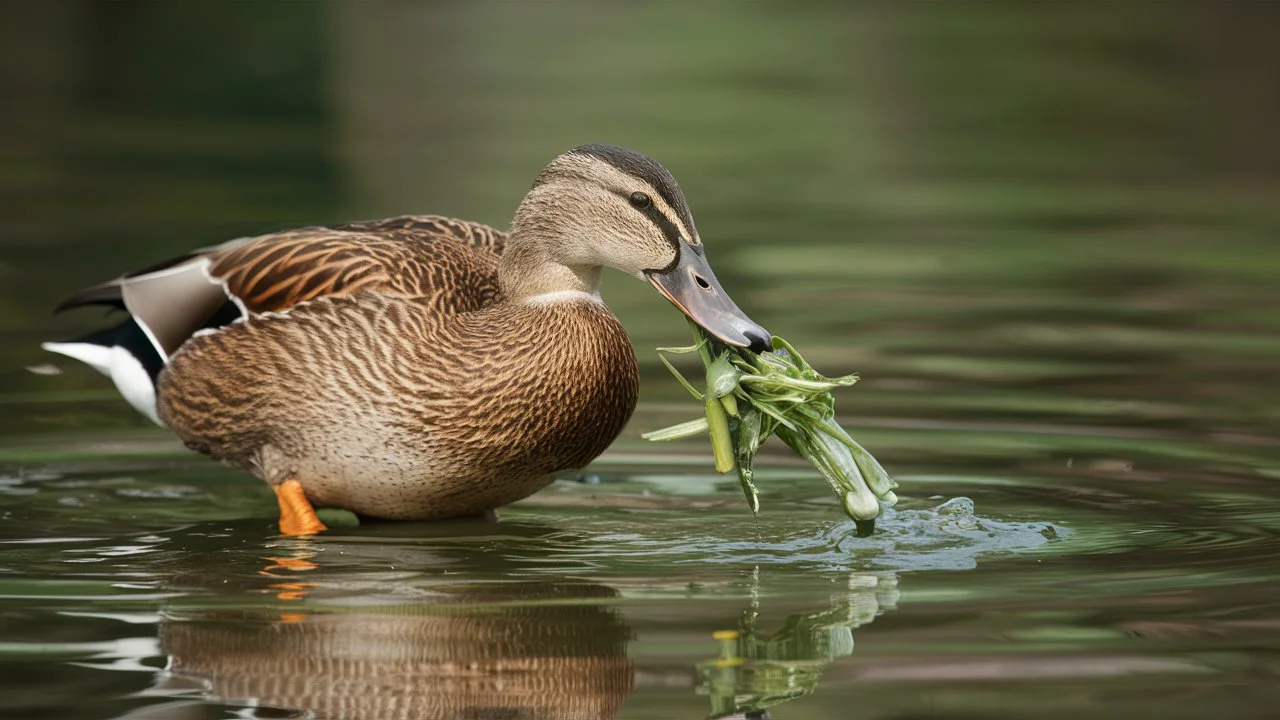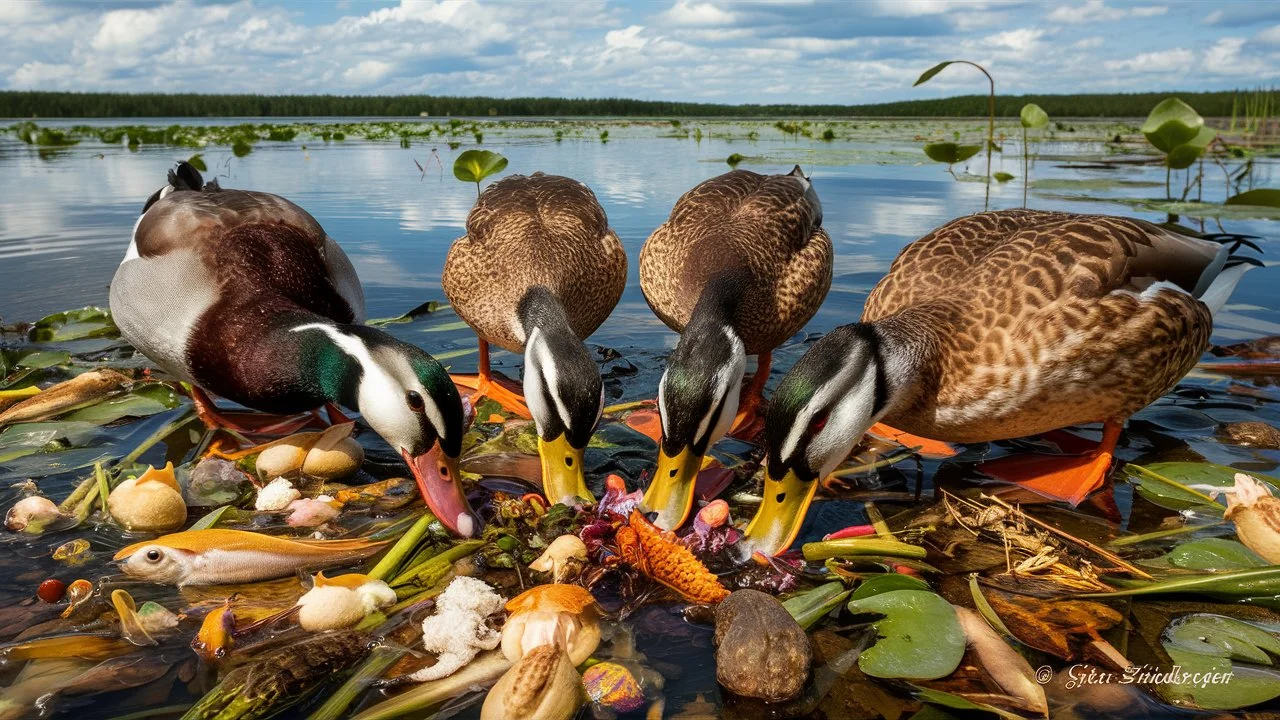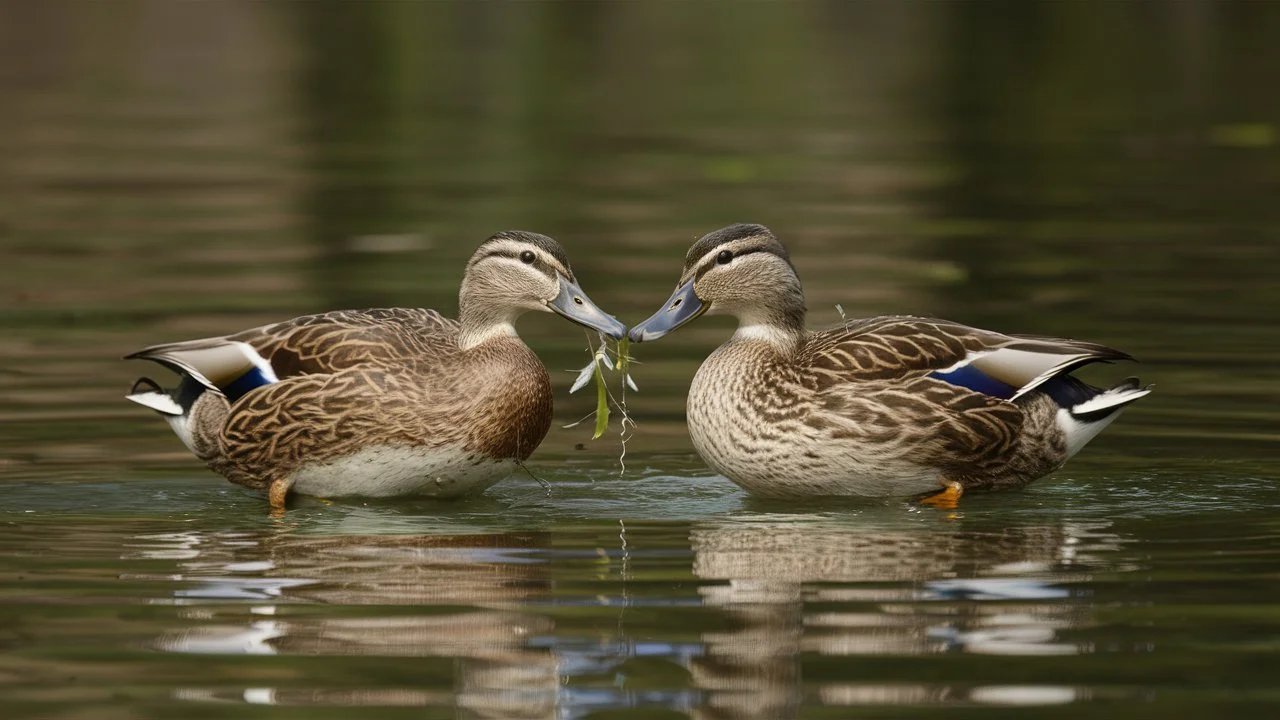Ducks are among the most adaptable and widespread waterfowl, found in diverse environments ranging from serene ponds and bustling lakes to expansive wetlands and rivers. Their diet plays a crucial role in their ability to thrive in such varied habitats. Understanding what ducks eat in the wild provides valuable insights into their behavior, ecological importance, and the delicate balance of their ecosystems.
This guide delves into the rich and varied diet of ducks, exploring the numerous food sources they rely on to sustain themselves, from aquatic plants and insects to small fish and grains. By examining their dietary habits, we can better appreciate the vital role ducks play in maintaining the health and biodiversity of their natural habitats.
Ducks in the wild eat a diverse diet that includes aquatic plants like duckweed and algae, insects and invertebrates such as dragonfly larvae and snails, small fish like minnows and tadpoles, and crustaceans and mollusks such as crayfish and shrimp. They also forage for seeds and grains like rice and corn, as well as wild berries and small fruits when available. This varied diet provides essential nutrients, helping ducks thrive in their natural habitats.
What Ducks Eat in the Wild?
Ducks are fascinating creatures with a diverse diet that helps them thrive in various environments, from ponds and lakes to rivers and wetlands. Understanding what ducks eat in the wild provides insights into their behavior, ecology, and the roles they play in their ecosystems. This comprehensive guide explores the dietary habits of ducks, highlighting the various food sources they rely on in the wild.
Related reading:Can Ducks Eat Asparagus?

1. Aquatic Plants
One of the primary components of a duck’s diet is aquatic plants. Ducks forage for various parts of these plants, including leaves, stems, roots, and seeds. Some common aquatic plants that ducks consume include:
- Duckweed: A favorite among many duck species, duckweed is a small, floating plant that provides essential nutrients.
- Water lilies: Ducks eat the leaves and seeds of water lilies, which are abundant in many freshwater habitats.
- Pondweed: Another common plant, pondweed, is rich in nutrients and easily accessible to ducks.
- Algae: Ducks also consume algae, which grow in abundance in water bodies. Algae provide essential vitamins and minerals that are crucial for their health.
Aquatic plants are an essential part of a duck’s diet because they are readily available and provide a rich source of nutrients. Ducks use their bills to sift through the water, capturing these plants efficiently.
2. Insects and Invertebrates
Insects and invertebrates form a significant part of a duck’s diet, especially during the breeding season when they require additional protein for egg production and the growth of ducklings. Ducks forage for various insects and invertebrates, including:
- Dragonfly larvae: Found in ponds and wetlands, dragonfly larvae are a rich source of protein.
- Water beetles: These insects are abundant in aquatic environments and are readily consumed by ducks.
- Caddisfly larvae: Often found in freshwater habitats, caddisfly larvae provide essential nutrients.
- Snails and worms: Ducks also forage for snails and worms, which are high in protein and easy to digest.
These protein-rich food sources are crucial for the growth and development of ducklings and for maintaining the health of adult ducks. Ducks use their bills to probe the mud and vegetation, capturing these small creatures.
3. Small Fish
Some duck species, particularly diving ducks, include small fish in their diet. These ducks dive underwater to catch fish, using their sharp bills to grasp their prey. Common fish species consumed by ducks include:
- Minnows: Small and abundant, minnows are a common food source for diving ducks.
- Sticklebacks: These small fish are often found in shallow waters and are easily caught by ducks.
- Tadpoles and froglets: Ducks may also consume amphibian larvae, which are rich in nutrients.
Fish provide essential proteins and fats that are crucial for ducks, particularly during migration and breeding seasons when their energy needs are higher.
4. Crustaceans and Mollusks
Crustaceans and mollusks are another important component of a duck’s diet, especially for species that inhabit coastal or brackish environments. Ducks forage for:
- Crayfish: Found in freshwater environments, crayfish are a rich source of protein and minerals.
- Shrimp: Coastal ducks often consume small shrimp found in tidal pools and estuaries.
- Mussels and clams: These mollusks provide essential nutrients and are consumed by ducks that can access them in their habitat.
These food sources are particularly important for ducks living in coastal areas, where they complement their diet with marine resources.
5. Grains and Seeds
Grains and seeds are a significant part of a duck’s diet, especially for species that inhabit agricultural areas or migrate through farmland. Ducks forage for:
- Rice and corn: Common crops in agricultural fields, rice and corn are readily consumed by ducks during migration.
- Wheat and barley: These grains are also found in agricultural areas and provide essential carbohydrates and proteins.
- Sunflower seeds: Ducks may consume seeds from wildflowers and crops, which are high in fats and nutrients.
Grains and seeds provide a rich source of energy, particularly important during migration when ducks need to build up fat reserves for long-distance travel.
6. Fruits and Berries
While not a primary food source, fruits and berries are consumed by ducks when available. These include:
- Berries: Ducks may forage for wild berries such as blackberries, blueberries, and raspberries, which provide vitamins and antioxidants.
- Fruits: In some regions, ducks may consume small fruits like apples, pears, and plums, especially if they fall to the ground or are accessible near water bodies.
Fruits and berries add variety to a duck’s diet and provide essential vitamins and minerals that support their overall health.
7. Human Food and Waste
In areas where ducks have regular contact with humans, they may consume food scraps and waste. This includes:
- Bread and grains: Often fed by humans, bread and grains can be a part of a duck’s diet, although not ideal for their health.
- Leftover food: Ducks may forage in urban areas, consuming discarded food items and waste.
While ducks can eat human food, it is not recommended to feed them bread and processed foods, as these can lead to nutritional deficiencies and health problems.
What Ducks Eat in the Water?
Ducks are versatile feeders that thrive in a variety of environments, including freshwater lakes, ponds, rivers, and coastal areas. Their diet in aquatic habitats is diverse and rich, helping them meet their nutritional needs and supporting their overall health. This guide explores the different types of food that ducks commonly consume in water.

1. Aquatic Plants
Aquatic plants form a significant part of a duck’s diet, providing essential nutrients and energy. Ducks forage for various parts of these plants, including leaves, stems, roots, and seeds. Common aquatic plants that ducks consume include:
- Duckweed: This small, floating plant is a favorite among many duck species due to its high nutritional content and easy accessibility.
- Water Lilies: Ducks eat the leaves, stems, and seeds of water lilies, which are abundant in many freshwater habitats.
- Pondweed: Another common plant, pondweed is rich in nutrients and easily accessible to ducks.
- Elodea: Often found in ponds and slow-moving rivers, Elodea provides ducks with a readily available food source.
Aquatic plants are a crucial component of a duck’s diet, especially for dabbling ducks, which feed on the surface or just below the surface of the water.
2. Algae
Algae are a primary food source for ducks, particularly in nutrient-rich waters. Ducks consume various types of algae, which are high in vitamins and minerals. Algae provide essential nutrients that support ducks’ growth, reproduction, and overall health.
- Phytoplankton: These microscopic algae float near the water surface and are consumed by ducks while foraging.
- Filamentous Algae: Found in strands or mats, these algae are readily eaten by ducks in ponds and lakes.
3. Insects and Invertebrates
Insects and invertebrates are vital for providing protein, especially during the breeding season when ducks require additional nutrients for egg production and raising ducklings. Ducks forage for these small creatures in and around water bodies.
- Dragonfly Larvae: Common in ponds and wetlands, dragonfly larvae are a rich source of protein.
- Water Beetles: These insects are abundant in aquatic environments and are readily consumed by ducks.
- Caddisfly Larvae: Often found in freshwater habitats, caddisfly larvae provide essential nutrients.
- Snails and Worms: Ducks forage for snails and worms in the mud and vegetation, which are high in protein and easy to digest.
4. Small Fish
Some duck species, particularly diving ducks, include small fish in their diet. These ducks dive underwater to catch fish, using their sharp bills to grasp their prey. Common fish species consumed by ducks include:
- Minnows: Small and abundant, minnows are a common food source for diving ducks.
- Sticklebacks: These small fish are often found in shallow waters and are easily caught by ducks.
- Tadpoles and Froglets: Ducks may also consume amphibian larvae, which are rich in nutrients.
Fish provide essential proteins and fats that are crucial for ducks, particularly during migration and breeding seasons when their energy needs are higher.
5. Crustaceans and Mollusks
Crustaceans and mollusks are another important component of a duck’s diet, especially for species that inhabit coastal or brackish environments. Ducks forage for these animals in their habitats.
- Crayfish: Found in freshwater environments, crayfish are a rich source of protein and minerals.
- Shrimp: Coastal ducks often consume small shrimp found in tidal pools and estuaries.
- Mussels and Clams: These mollusks provide essential nutrients and are consumed by ducks that can access them in their habitat.
These food sources are particularly important for ducks living in coastal areas, where they complement their diet with marine resources.
6. Amphibians
Ducks may occasionally consume amphibians, such as small frogs and their larvae (tadpoles). These provide additional protein and nutrients, supporting ducks’ dietary needs, particularly during the breeding season.
- Tadpoles: Common in ponds and wetlands, tadpoles are an easy target for foraging ducks.
- Small Frogs: Ducks may eat small frogs, especially if they are abundant in their environment.
7. Seeds and Grains
While primarily found on land, seeds and grains can also be part of a duck’s aquatic diet, particularly when they fall into the water or grow near shorelines. Ducks forage for:
- Rice and Corn: Often found in agricultural runoff or near farmlands, these grains are readily consumed by ducks.
- Sunflower Seeds: Ducks may eat seeds from wildflowers and crops, which are high in fats and nutrients.
Seeds and grains provide a rich source of energy, particularly important during migration when ducks need to build up fat reserves for long-distance travel.
8. Aquatic Insects
Ducks also consume various aquatic insects that live in or around water bodies. These insects are abundant and provide a good source of protein.
- Mayflies: Common around water bodies, mayflies are a readily available food source for ducks.
- Mosquito Larvae: Found in stagnant water, mosquito larvae are an easy target for ducks.
- Water Striders: These insects live on the surface of the water and are consumed by ducks while foraging.
Conclusion
Ducks have a diverse and adaptable diet that allows them to thrive in various environments. From aquatic plants and insects to small fish and grains, their dietary habits reflect their ability to exploit different food sources in their habitats. Understanding what ducks eat in the wild highlights their ecological role and the importance of preserving their natural habitats to support their dietary needs.
By ensuring that wetlands, rivers, and other natural environments are protected, we can help maintain the delicate balance of ecosystems that support the diverse diet of ducks. Observing ducks in their natural habitats provides a fascinating glimpse into their lives and the intricate web of nature that sustains them.

